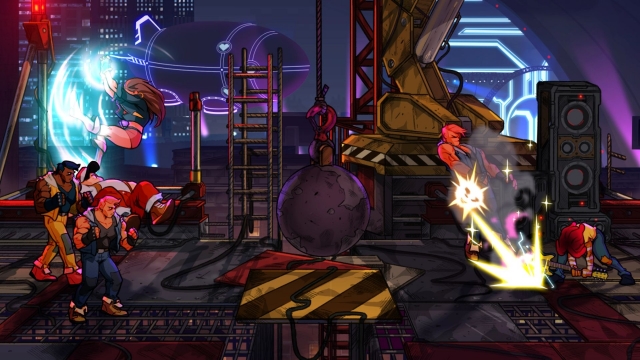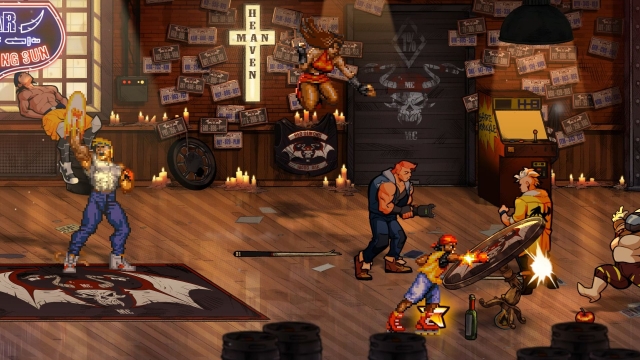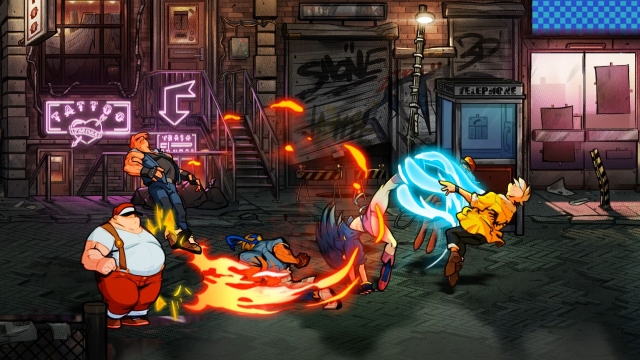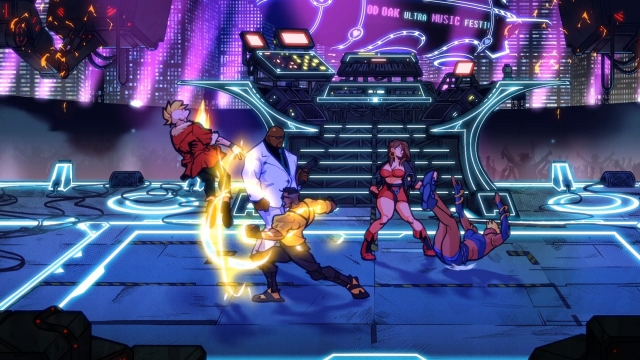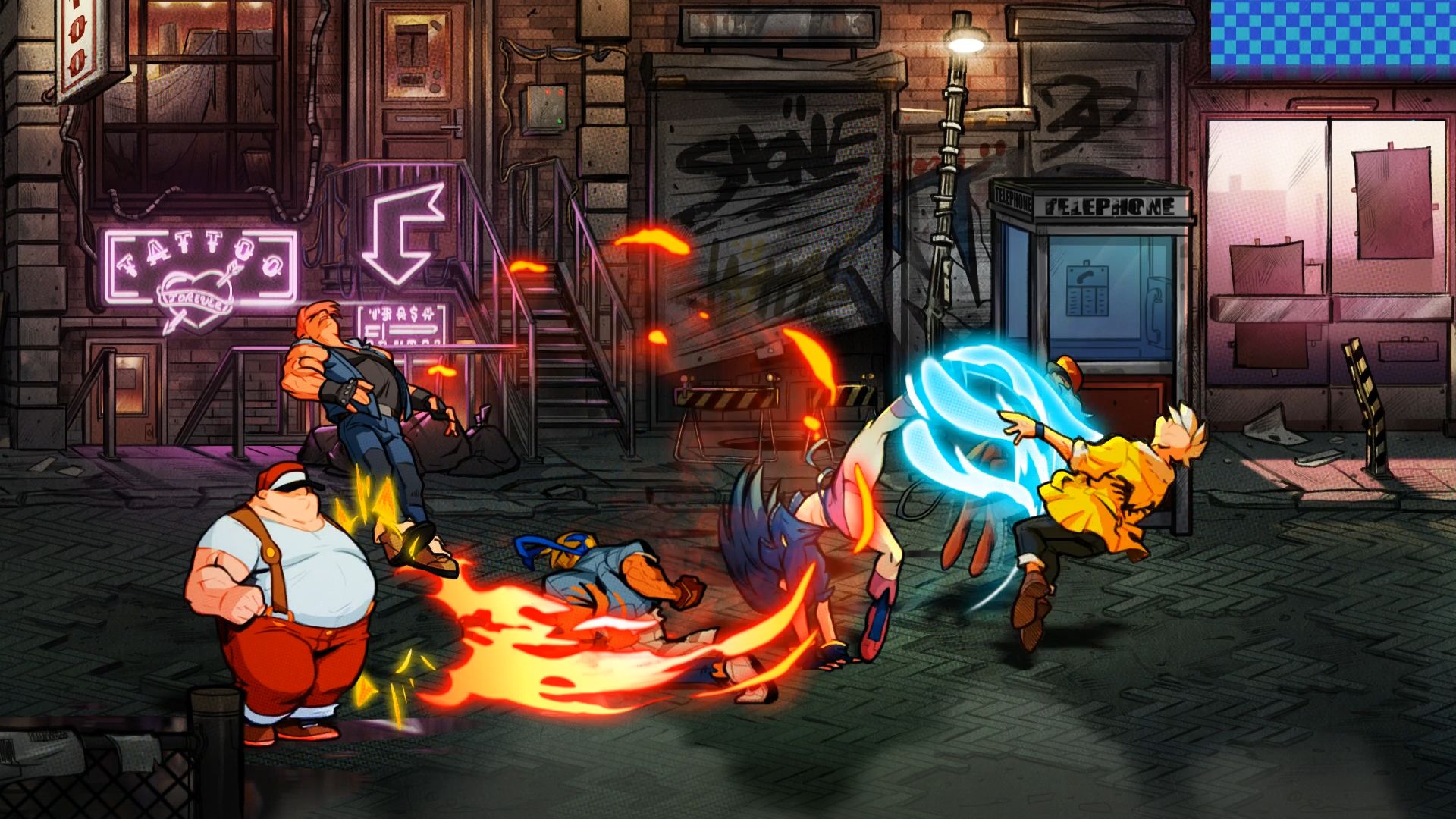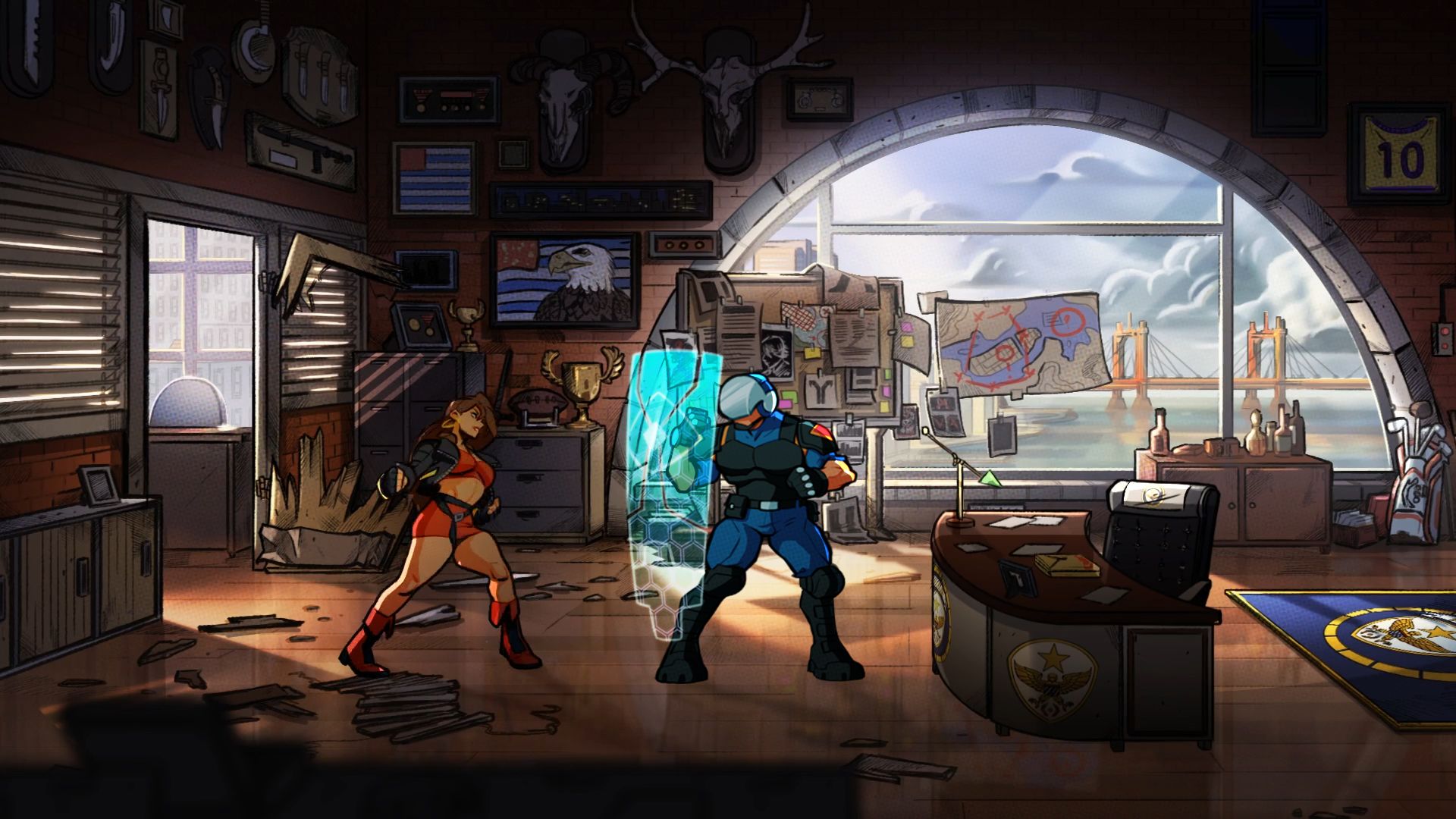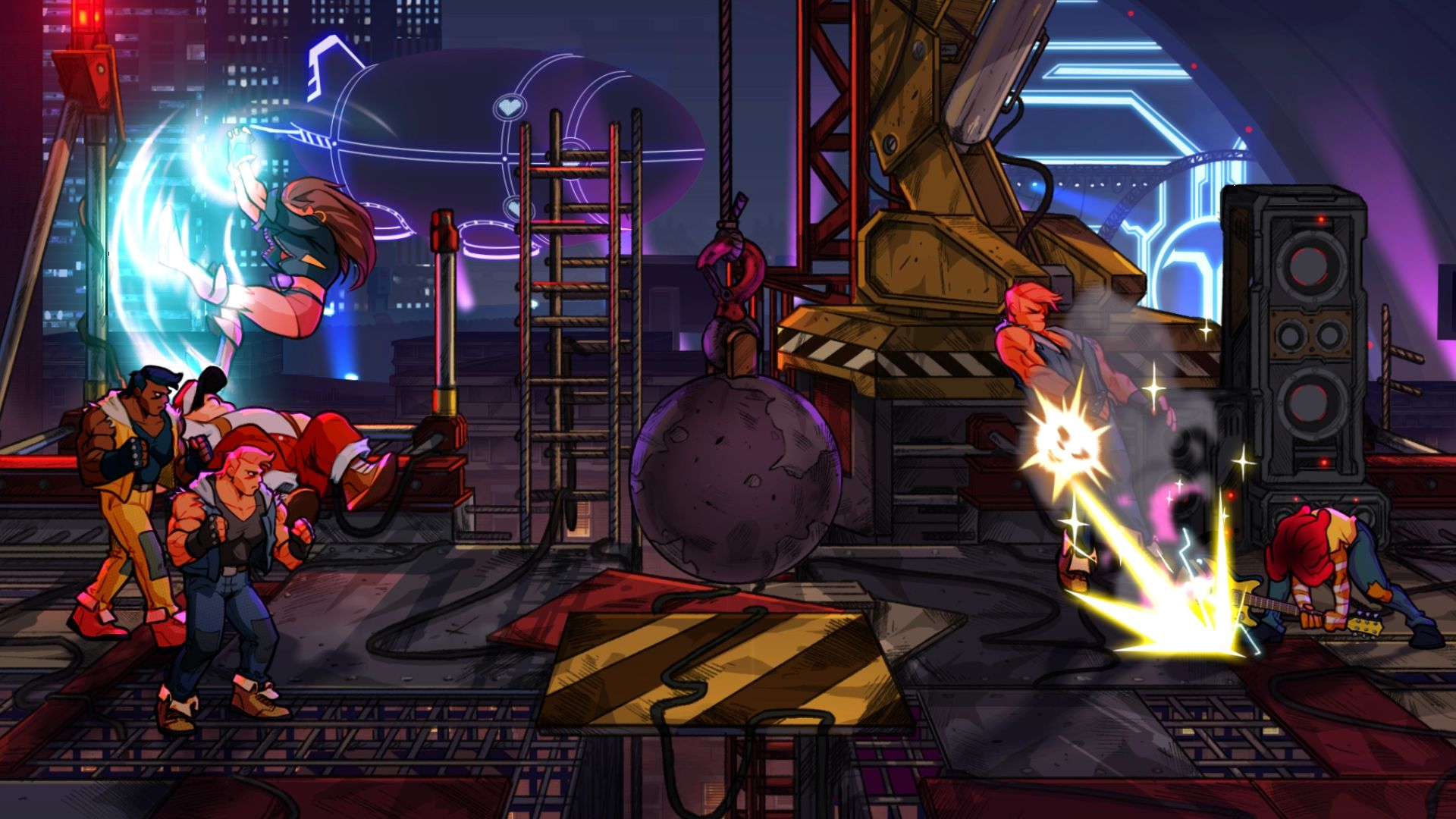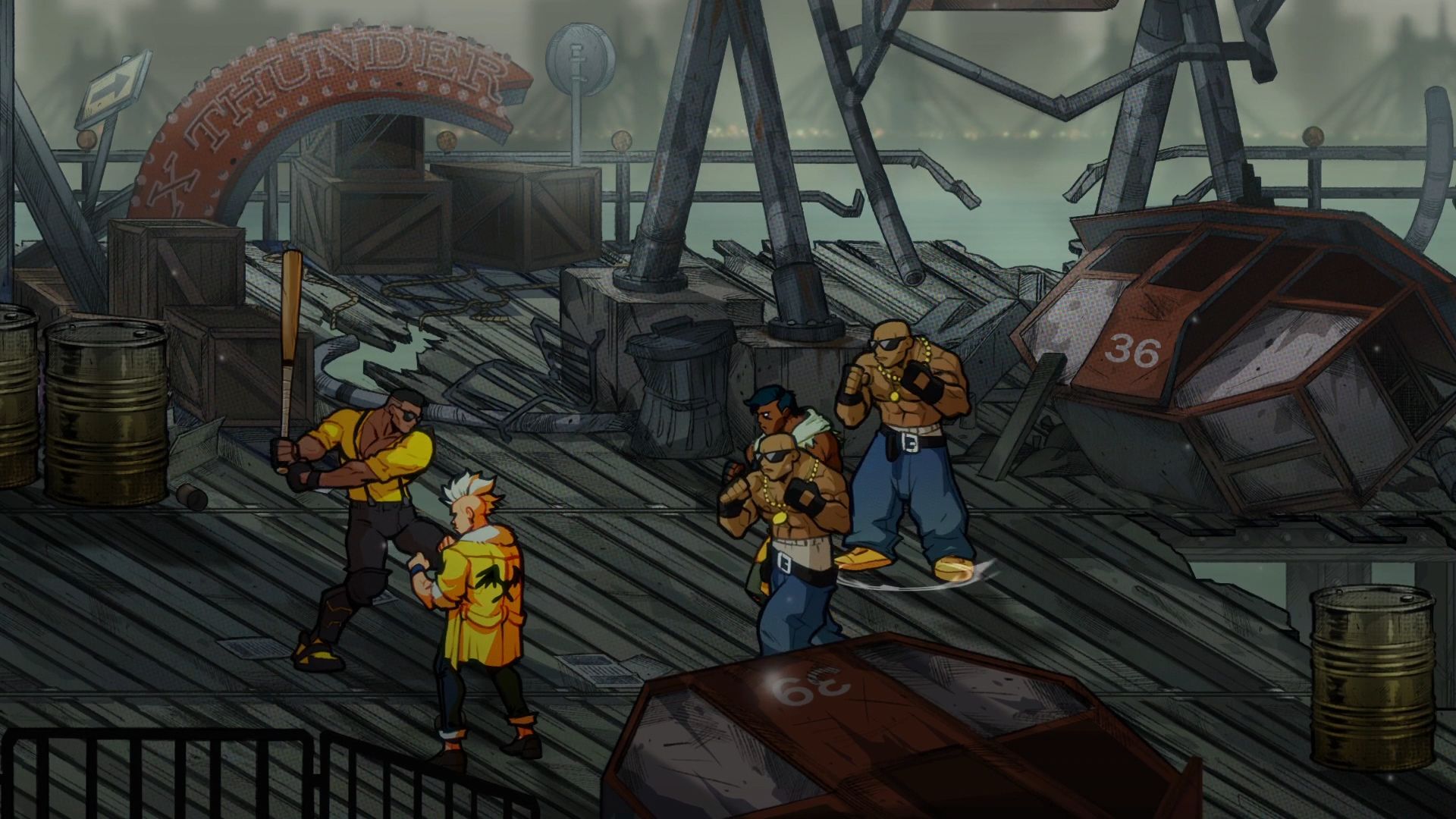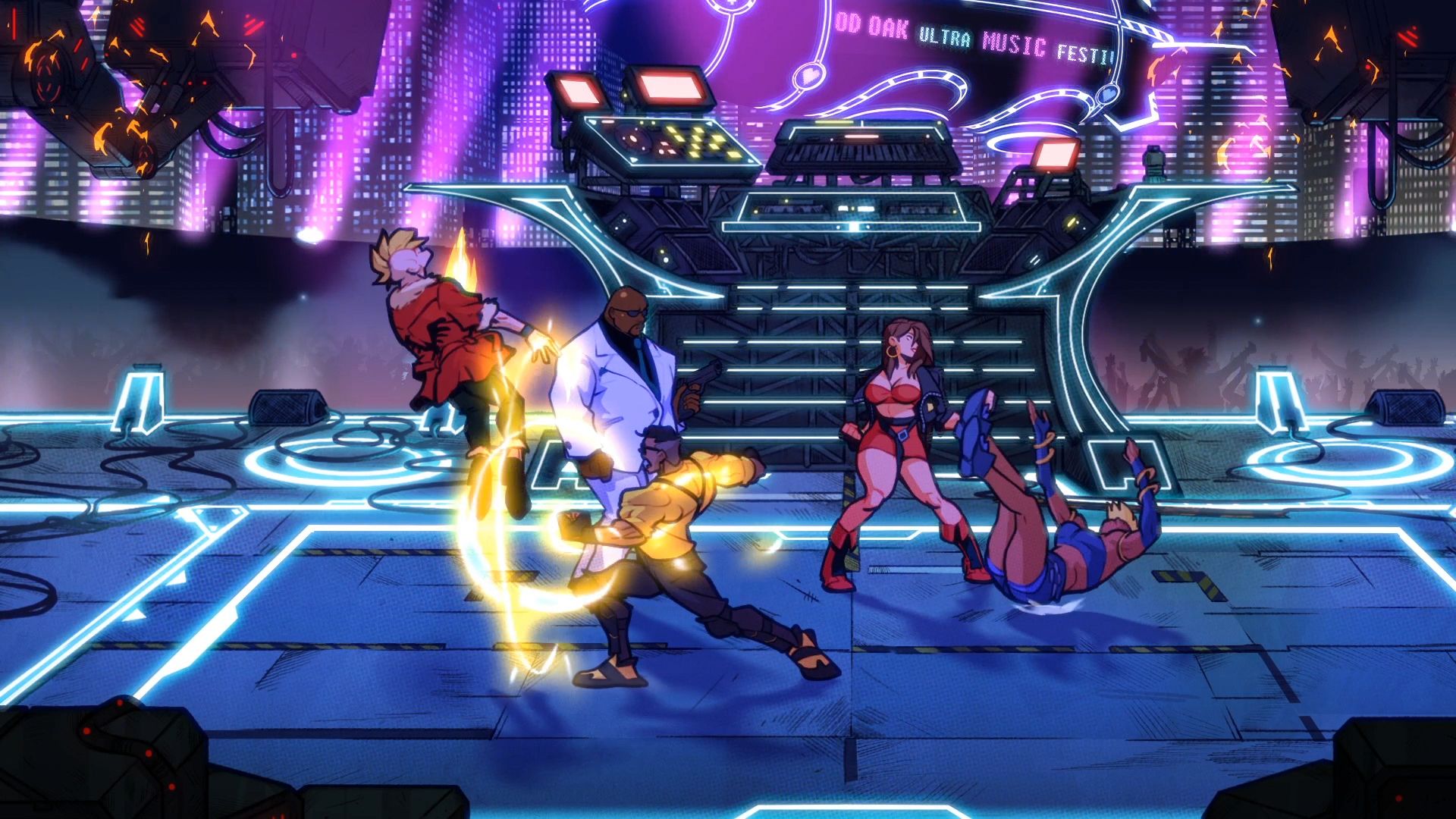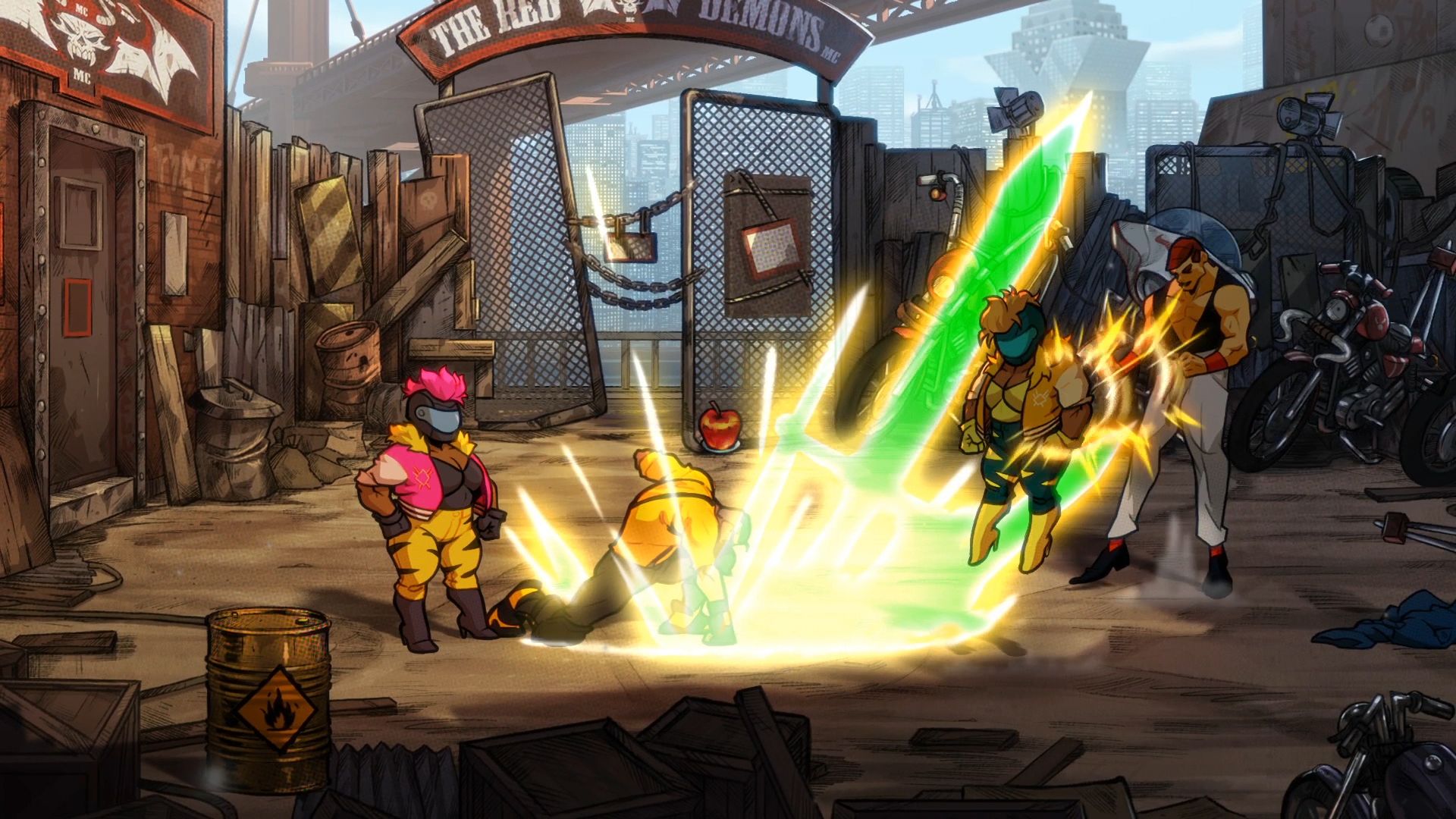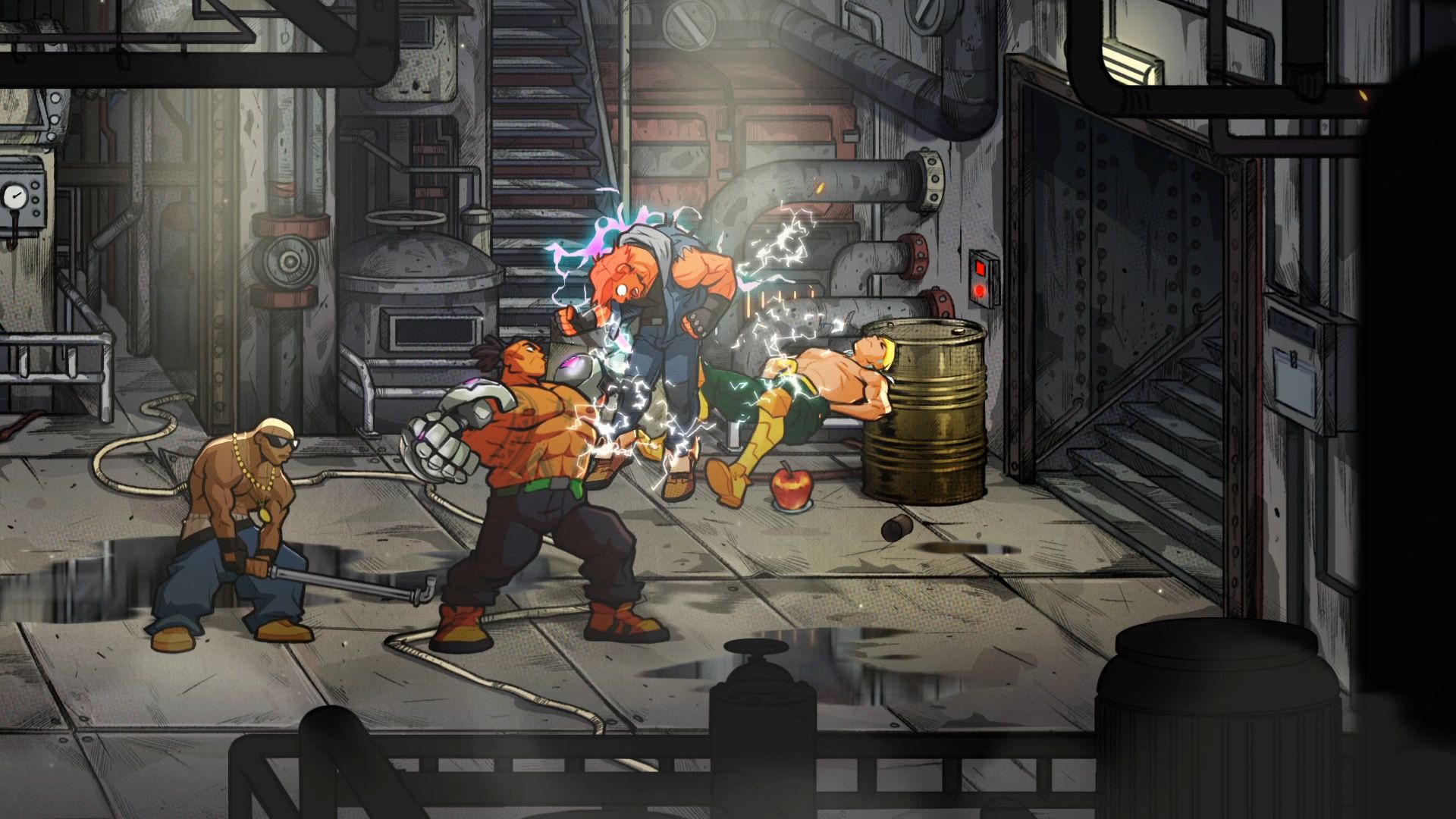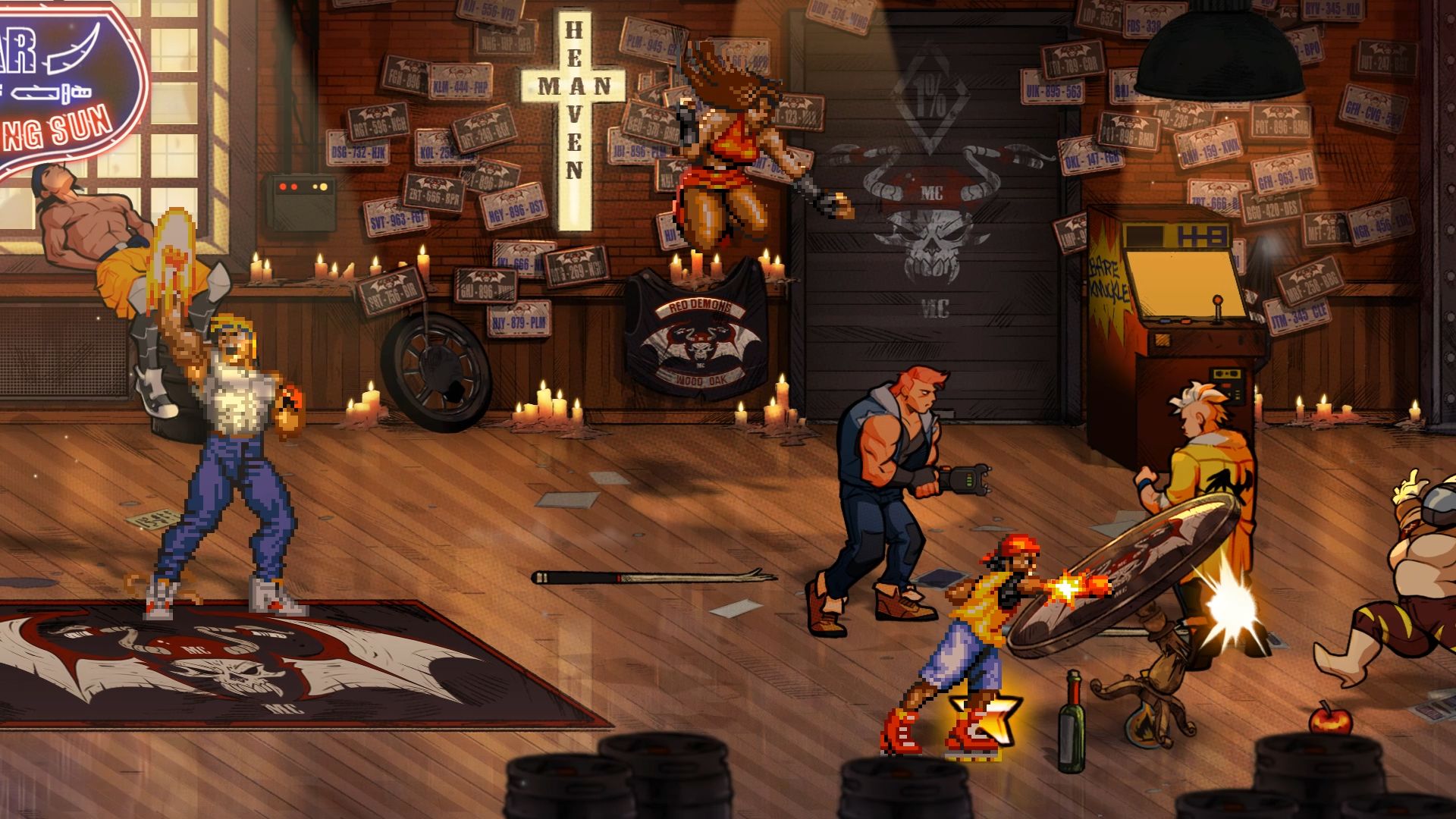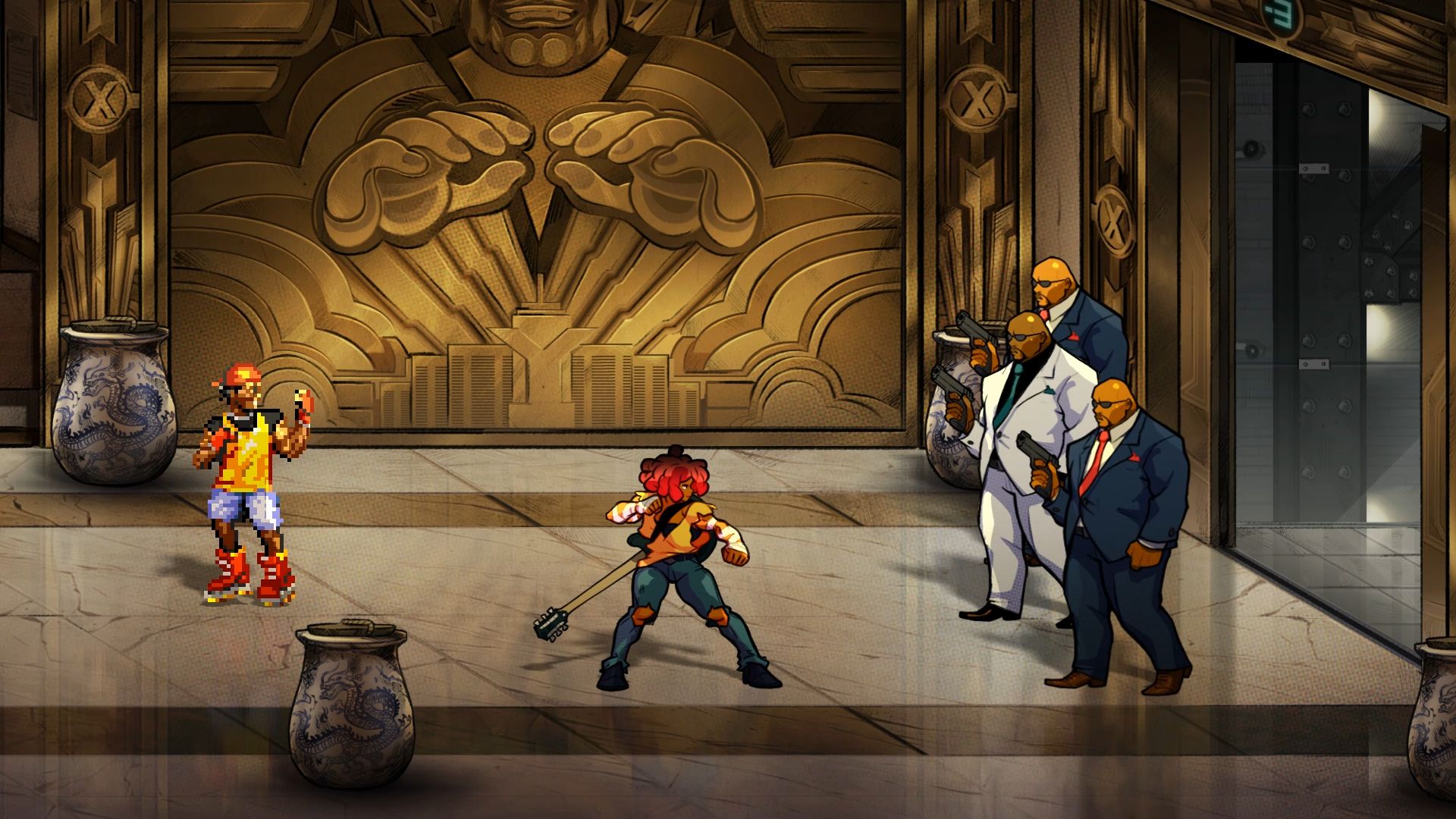Streets of Rage 4
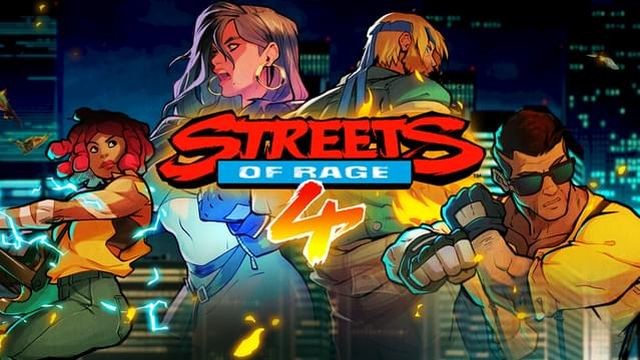
In 1994, Streets of Rage 3 hit the Genesis and it left a lasting impact on the beloved series – for better and worse. In a genre damaged both then and now for a lack of change, it was a game that aimed to change as many things as possible and received mixed reviews for doing so. The game’s visual style changed from bright and vivid to more grim, with each character also getting an attire color change too. It looked like a completely different experience, and as a result, was a bit like a room that’s been boldly repainted – but maybe a step too far and you can’t go back and change it. The same goes for the soundtrack, which brought Yuzo Koshiro back, but he was in the mood to experiment and went with “of its time” music once again that fit the mid-’90s electronica sound, but veered away from what worked before.
Attempts were made to revive the series later on, with each one being canceled and one being turned into Fighting Force on the PS1 and N64. For two and a half decades, the lone shining light for fans was Streets of Rage Remake – a fangame that acted as a ‘best of’ for the series’ gameplay and music, alongside games like Beats of Rage that spawned their own sub-series of ROM hacks. While the grey market thrived when it came to inspiration for the series, there was nothing officially on the books until Streets of Rage 4 was finally announced in 2018. With Lizardcube and DotEmu using the IP, there was a lot of reason to be happy as the former has crafted some top-notch games like Wonder Boy: The Dragon’s Trap and has earned the trust of retro-loving gamers.
Streets of Rage 4 (SOR 4) is finally here and takes place a decade after the third entry. Mr. X is gone, but not forgotten as his Y Twin offspring have taken over his empire and are out to take over the city. Axel and Blaze are back on the case alongside Adam’s daughter Cherry and friend Alex. With the passage in time comes the change in roles for each character, which is one of the most interesting shifts in how everything feels. Axel went from mid-tier to more of a bruiser-style with time, while Blaze is more powerful and still quick with her actions – but not as nimble. Cherry acts as a bit of a hybrid of Skate and Blaze, as she’s got a lot of Skate’s speed, but uses a guitar as her primary weapon of choice and quick attacks that use enemies’ size advantages against them.
At around the mid-way point, you do gain the ability to unlock Adam – and he’s easily the most well-rounded character in the initial bunch. Alex takes up Max’s old role of being the giant bruiser, but is much faster when it comes to flying attacks thanks to his flying special that allows him to quickly jump from enemy to enemy. Each character can unleash a special attack with Y that drains a bit of health – so it’s a good idea to use it in a crowded area when you have a health pickup nearby and can safely use it. Lives are tough to earn and you can easily go through one character’s complete set of lives in a tough outing.
Trial and error will show you which character is best for each stage. Using Cherry in an area that wound up having a lot of spikes was tough because I love her brisk pace – but it led to me eating a ton of damage. One great anti-frustration feature SOR 4 brings to the table is an Overwatch-esque ability to switch characters between levels and also not sharing one life pool for the story mode. This means that you have at least six lives per character to make it through the story – and it encourages not only those who might be a bit rusty to at least see things through to completion, but also fighting through it again with different character picks on higher difficulties. There are some great perks for beating the game too – like SOR sprite art characters and art galleries. Playing as the former also unlocks game-specific specials as well using Y – so if you have an SOR 1 character, they’ll unleash a cop car missile attack towards your enemies.
Streets of Rage 4 manages to take everything that worked before and expands upon it while also modernizing some aspects of the beat-em-up. Controls have been optimized to best make use of all of the buttons current controllers have by either giving you the option of multi-button presses or a more streamlined approach where each button does something different. The default setup is great because you can have RT as your behind the back attack and that allows you to take out larger groups by carefully seeing who’s closest and learning how much range each character’s attack will give you front and back-facing.
Weapons are also more versatile and can be thrown and used in the hand for more long-term attacks since you can take out a group with a single weapon if you’re lucky. Weapon variety is massively improved here, with series favorites like baseball bats and pipes returning – but being joined by things like giant swords and meat cleavers. It’s not quite as ridiculously-overloaded as games like Dynamite Deka were in the day, but still helps keep things fresh. There is room for improvement with the flow of the action though. The lack of ground attacks remains a bit odd, and the lack of branching paths hurts slightly.
An argument can be made that having only a few characters be able to move quickly hurts the game – but it’s more a matter of preference. Personally, having each character feel different is worth that trade-off and I didn’t think that at first. It took a playthrough with each character being used several times off and on to come to the conclusion that it’s better as it is since some characters are far better-suited being mighty glaciers because it makes you think about how they attack differently.
Axel is slower now, but he packs more of a whallop – and if you want to cover a lot of ground quickly, then you bust out his jumping down special and will soar to the sky at a 45 degree angle and slam into one enemy hard and then throw a barrage of flaming punches to anyone around you. So while he’s not a minute-to-minute speedster, he makes it count and the game doesn’t have as many cheap areas that require perfect timing to avoid stage hazards – although there is an early one that can drain lives quickly if you can’t see the on-screen prompts in time.
Overall, the feel of combat is great and the only thing I think hurts it is the lack of grounded attacks. Throws still feel nice and violent, and that’s accented by having not only rumble – but on-screen shake which you can turn off and on. There’s a lot of customization like that, and you can even pick what kind of health pickups you prefer for small and large items. Longtime fans of the series may only want to go with apples and everyone’s favorite, garbage can roast chicken – but you do have vegan options available if you want.
Visually, SOR 4 goes for a more modern-day cartoon art style – and it works nicely. The animation is crisp and there aren’t many visual oddities – although there are a couple of weird bits, like enemies not always thrusting a weapon towards you to attack. The end result is you just kind of get walked into with deadly forces. Still, the overall art is superbly-detailed and the environments are far more diverse than the norm for the genre. As is tradition for the series, you have things like bars and boats – but you also have a brightly-lit city area and a fast-paced fight on top of a train. A DJ brawl late in the game evokes a bit of Scott Pilgrim vs. The World, and fits the franchise’s longtime association with dance music.
Character animation is as robust as needed, and manages to be both fluid and fast. One upside to the pixel art characters being thrown in is that you see just how limited the animation was – but it also shows off just how much easier it was to nail timing with single-frame attacks. Despite that, it’s still a joy to look at the old mixing in with the new even if it does clash a bit visually. There are great sendups to the past like the Pine Pot restaurant and cute bits like Roo being a bartender at a biker bar and a Bare Knuckle arcade machine being visible in several areas just like SOR 2.
While the third Streets of Rage game went for a strange soundtrack, the fourth entry sticks a lot closer to what worked in the past. The list of contributors is far more robust, and yet the end result still feels like it is part of a cohesive musical story. Dance music remains a core here, but with a more modern bend to it. The sound effect work is largely great – but there are some oddballs thrown in. Knife usage sounds more like a blunt object being used, although things like the breaking of glass bottles for new multi-purpose weapons sound better than ever. Thankfully, the soundtrack helps make up for the few weaknesses in the sound design – and despite multiple composers being used, it’s still a soundtrack that feels as cohesive as the ones in the first two entries.
Overall, while it isn’t perfect and doesn’t quite feature some of the more versatile quality of life features in the genre – Streets of Rage 4 still delivers an incredible experience. The increased focus on the narrative works surprisingly well despite the genre being known for having razor-thin plots. The combat flows smoothly. Long-time fans will love the latest entry in the series, while newcomers may want to start with an earlier entry as some of the humor and fun is tied a bit too deeply into callbacks to really work on a series newcomer. The game looks great, plays even better, and has one of the finest OSTs in the genre’s history. The 25-year wait for Streets of Rage 4 was worth it.
Reviewed By: Jeremy Peeples
Publisher: DotEmu
Rating: 95%
——————————————————————————–
This review is based on a digital copy of Streets of Rage 4 for the PC provided by DotEmu.
 Game Over Online
Game Over Online